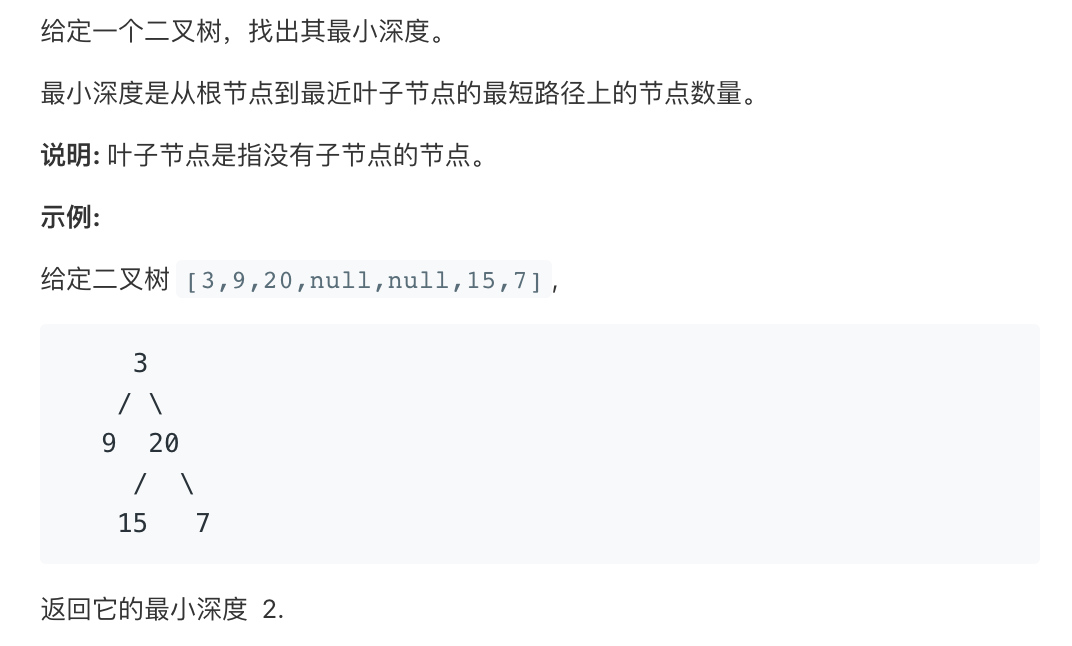解题思路
递归
最直接的思路就是递归。
我们用深度优先搜索来解决这个问题。
public int minDepth(TreeNode root) {if(root==null)return 0;if(root.left==null&&root.right==null)return 1;int min_depth = Integer.MAX_VALUE;if(root.left!=null)min_depth=Math.min(min_depth,minDepth(root.left));if(root.right!=null)min_depth=Math.min(min_depth,minDepth(root.right));return min_depth+1;}
复杂度分析
- 时间复杂度:我们访问每个节点一次,时间复杂度为 O(N) ,其中 N是节点个数。
- 空间复杂度:最坏情况下,整棵树是非平衡的,例如每个节点都只有一个孩子,递归会调用 N(树的高度)次,因此栈的空间开销是 O(N) 。但在最好情况下,树是完全平衡的,高度只有 log(N),因此在这种情况下空间复杂度只有 O(log(N)) 。
深度优先搜索迭代
我们可以利用栈将上述解法中的递归变成迭代。
想法是对于每个节点,按照深度优先搜索的策略访问,同时在访问到叶子节点时更新最小深度。
我们从一个包含根节点的栈开始,当前深度为 1 。
然后开始迭代:弹出当前栈顶元素,将它的孩子节点压入栈中。当遇到叶子节点时更新最小深度。
public int minDepth(TreeNode root) {Stack<Pair<TreeNode,Integer>> stack = new Stack<>();if(root==null)return 0;elsestack.add(new Pair<>(root,1));int min_depth = Integer.MAX_VALUE;while (!stack.isEmpty()){Pair<TreeNode,Integer> current = stack.pop();root = current.getKey();int current_depth = current.getValue();if(root.left==null&&root.right==null)min_depth=Math.min(min_depth,current_depth);if(root.left!=null)stack.add(new Pair<>(root.left,current_depth+1));if(root.right!=null)stack.add(new Pair<>(root.right,current_depth+1));}return min_depth;}


